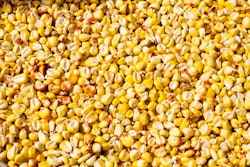
When it comes to getting grain from farms to your table — or halfway across the world — the U.S. has one of the most impressive transportation systems around. The latest USDA Agricultural Marketing Service transportation data shows it moved nearly 575 million tons of grain in 2022. This massive operation, and unsung hero of the grain industry, is what keeps the U.S. at the top of the global supply chain.
3 main modes
There are three primary ways grain travels across the country, and each one plays a unique role.
Trucks lead the way, handling about 62% of all grain movement. That’s over 350 million tons. Trucks are flexible, especially for short trips, like getting grain from farms to local elevators or storage facilities.
Trains come in second, moving about 26% of the grain. They’re perfect for long hauls, especially when grain needs to travel across states to reach export terminals or big processing plants.
Barges might only carry 12% of the load, but they’re still crucial for moving grain down major rivers like the Mississippi. They’re also cost-effective for bulk shipments heading to the Gulf Coast for export.
Different crops, different routes
Not all grains travel the same way. According to the USDA Agricultural Marketing Service’s Transportation of U.S. Grains A Modal Share Analysis 1984-2022 Update, here’s how it breaks down:
- Corn, the largest crop in the U.S., rides mostly in trucks, or about 70% of it. The rest travels by rail (22%) and barge (8%). That makes sense because corn is used domestically across the country, from feeding animals to making ethanol.
- Wheat has a more balanced travel plan. Rail handles the most (56%), with trucks (29%) and barges (15%) picking up the rest. A large portion of the U.S. wheat crop is destined for exports, and rail is key for moving it to ports.
- Soybeans are evenly split between truck (51%) and by rail (25%) and barge (24%). Soybeans are used both domestically for animal feed and biodiesel production, as well as abroad, requiring a mix of all transportation modes.
Home vs. abroad
Most of the grain, about 73%, stays in the U.S. for domestic use. The remaining, around 27% of the grain, heads overseas. That 3-to-1 ratio shows how important the local market is, although exports still play a huge role in the ag economy.
The U.S. grain transportation system is a time-tested, running efficiently for more than a century. Whether by road, rail or river, it fuels the country’s agricultural engine and helps feed people around the world.












